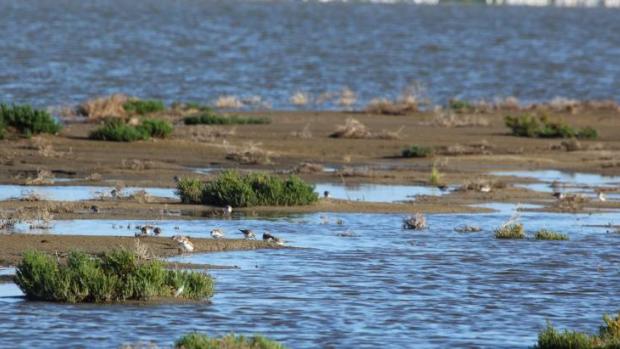Loading
Creating a honeypot for the region

Every now and then an opportunity comes along that is too good to miss, an opportunity that can make such a big difference and have long-term impacts for an entire region.
When it comes to Lake Cullen near Kerang, that time is now.
Lake Cullen is an important part of the internationally recognised and protected Kerang Wetlands Ramsar site, and is valued for its large size and its unique environment, which is used extensively by waterbirds to nest and forage for food.
While its size is a big plus, it can also work against it, because it takes a long time to fill solely with environmental water. On top of that, river regulation has cut it off from natural flows.
The current understanding of groundwater interaction is that the nearby marshes must fill to ensure the groundwater under Lake Cullen isn’t pushed into their lake beds.
Last year’s floods have presented water managers with a rare opportunity to fill Lake Cullen, and create an environmental honeypot for the entire region.
“Lake Cullen is amazing because it is a large temporary brackish lake,” North Central Catchment Management Authority (CMA) Environmental Water Manager Louissa Rogers said.
“Because of its size, salinity and temporary nature, it has a diverse range of plants, bugs, birds and fish and when there is water in it, it is a big and important feeding ground for the entire region.
“It is not uncommon to see thousands of waterbirds, including many migratory species on it, and we are excited about what is about to happen out there.”
The North Central CMA filled the lake to only about 30 per cent of its capacity after last year’s floods, to keep airspace available in case of more flooding. Many waterbirds immediately responded by making nests, and the CMA maintained water levels over summer to help the resulting bird breeding event succeed.
“There was enough water in the system to fill it then, but we wanted to wait until the birds had fledged and the hot summer was over,” Ms Rogers said.
“The birds have left their nests and as the days cool down, now is the right time for Lake Cullen to be filled. We will soon start delivering up to 11,600 megalitres, which will fill it for the first time in about six years.” M
s Rogers said filling Lake Cullen is important for more than just the local bird population. “Water will stay in Lake Cullen for about two years,” she said.
“That will mean as other wetlands recede naturally next summer and spring, there will still be water in Lake Cullen.
“We then expect birds to move from other wetlands to Cullen, so from a landscape point of view, it will become a very important refuge site for birds, even if we have a dry summer and spring.”
Ms Rogers said she is expecting big things from Lake Cullen as it dries. “Delivering flows for wetland and river health is not just about just adding water. Drying stages can be just as important,” she said.
“As Lake Cullen dries, it will change, becoming more saline. This will result in a different kind of plant growth, which will attract different kind of water bugs, fish and birds.
“It will also become magnificent mudflat habitat for birds and plants to thrive and will turn into an environmental honeypot for the entire region for a long time.”
Managing water to look after our valuable wetlands is part of the State Government’s broader $222 million Water for Victoria initiative to improve the health of waterways and catchments across regional Victoria.
The flow is in line with the Seasonal Watering Plan’s wet scenario actions.
The Victorian Environmental Water Holder’s Seasonal Watering Plan 2016-17 is available to download from www.vewh.vic.gov.au, and regular updates are posted on the North Central CMA website www.nccma.vic.gov.au.
